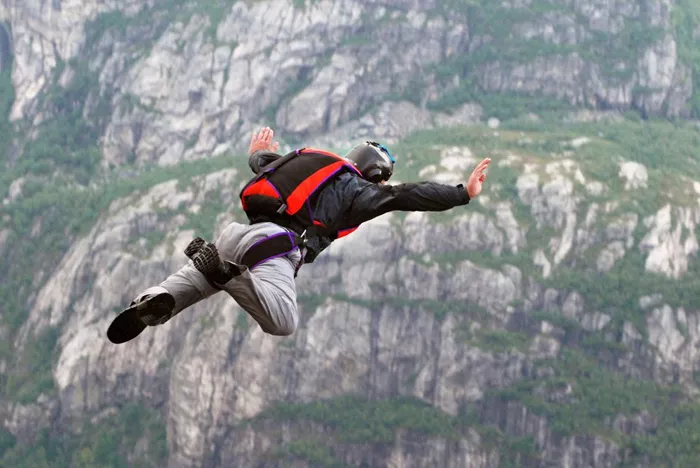Skydiving is one of the most exhilarating extreme sports, offering a unique blend of adrenaline and breathtaking views. For many, the thrill of jumping out of an airplane and freefalling towards the earth is a bucket-list experience. However, a common question among potential skydivers is: How long does a skydive last? This article delves into the various components that contribute to the overall duration of a skydive, including freefall time, parachute descent, and other factors that may influence your experience.
The Components of A Skydive
To fully understand how long a skydive lasts, it is essential to break down the experience into its main components:
- Preparation and Briefing
- Ascent to Altitude
- Freefall
- Parachute Descent
- Landing
Each of these stages plays a crucial role in determining the total duration of your skydiving adventure.
Preparation And Briefing
Before you even step foot on the aircraft, there is a necessary preparation phase. This typically involves:
Check-in: Upon arrival at the dropzone, you will need to check in, fill out paperwork, and possibly watch an introductory video about safety procedures.
Training Briefing: For tandem jumpers, this includes a briefing by your instructor on what to expect during the jump, safety protocols, and how to position your body during freefall and landing.
Gear Fitting: You will be fitted with a jumpsuit, harness, helmet, and goggles.
This preparation phase can take anywhere from 30 minutes to an hour depending on the number of jumpers and the specific dropzone’s procedures.
Ascent to Altitude
Once you are geared up and ready to go, it’s time to board the aircraft for ascent. The altitude from which you jump significantly affects both freefall time and overall skydive duration.
Typical Jump Altitudes: Most tandem skydives occur from altitudes between 10,000 and 18,000 feet. The most common altitude for tandem jumps is approximately 13,500 feet.
Ascent Time: The time it takes to reach this altitude can vary based on several factors including aircraft type and number of jumpers on board. Generally, it takes about 10 to 20 minutes to ascend to an altitude of 13,500 feet.
Freefall
The freefall portion is often considered the highlight of the skydive experience.
Duration: On average, freefall lasts between 30 seconds and 60 seconds depending on your exit altitude. For instance:
From 10,000 feet: approximately 30 seconds
From 13,000 feet: approximately 50 seconds
From 14,000 feet: about 60 seconds
From higher altitudes (up to 18,000 feet), freefall can extend up to 90 seconds.
Speed: During freefall, skydivers typically reach terminal velocities between 120 mph (for tandem jumpers) and up to 180 mph (for experienced solo jumpers in head-down positions). This rapid descent creates an exhilarating rush that many describe as one of the most thrilling experiences of their lives.
Parachute Descent
After freefalling for approximately half a minute or more, it’s time for the parachute deployment.
Deployment Altitude: Parachutes are usually deployed at around 5,000 feet above ground level. This allows for a safe transition from freefall to parachute descent.
Descent Duration: The parachute ride back down typically lasts between 4 to 6 minutes for tandem skydivers 35. Factors influencing this duration include:
Parachute Size: Larger parachutes generally descend slower than smaller ones.
Weight: Heavier jumpers may descend faster due to increased weight affecting descent rates.
Flying Style: Skydivers who maneuver their parachutes with turns or spirals may land quicker than those flying straight down.
During this phase, skydivers can enjoy stunning aerial views while experiencing a peaceful glide back toward the earth.
Landing
The landing phase marks the conclusion of your skydive.
Touchdown: As you approach the ground, your instructor will guide you through landing techniques. Proper technique ensures a smooth landing without injury.
Duration: The actual landing process is brief but requires attention; it typically lasts only a few moments as you descend gently onto the landing area.
Total Duration of Skydiving Experience
When considering all components involved in skydiving—from preparation through landing—the total time commitment can range from approximately:
2 to 4 hours for tandem skydives when accounting for check-in procedures and ascent times.
This timeframe allows for any delays due to weather or operational issues at busy dropzones.
Factors Influencing Skydive Duration
Several factors can affect how long your skydive lasts:
Altitude: Higher jumps result in longer freefall times.
Weight: Heavier individuals may fall faster due to increased gravitational force.
Body Position: The orientation during freefall influences speed; belly-to-earth positions are more stable but slower than head-down positions.
Weather Conditions: Wind speed and air density can slightly alter descent rates.
Type of Jump: Tandem jumps generally take longer due to additional safety measures compared to solo jumps.
Conclusion
In summary, while the actual skydive experience—comprising both freefall and parachute descent—lasts around five to seven minutes on average, potential skydivers should prepare for an overall time commitment of several hours at the dropzone. The anticipation builds during preparation and ascent before culminating in an unforgettable few moments of freefall followed by a serene parachute descent.
Related topics:
- What Should You Wear to Go Skydiving?
- The 6 Best Skydiving Melbourne in 2024
- How Much Does Skydiving Cost in Chicago?

